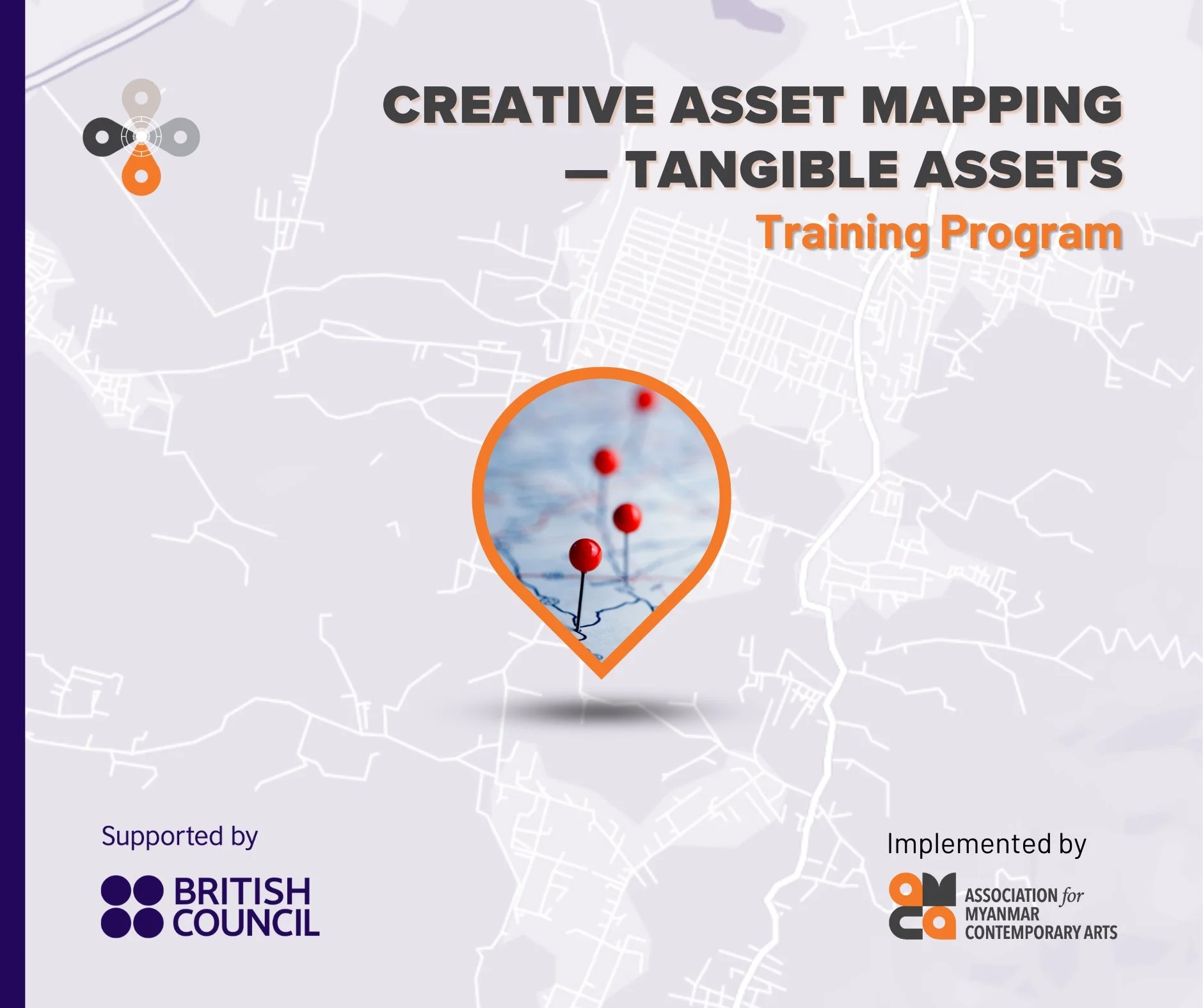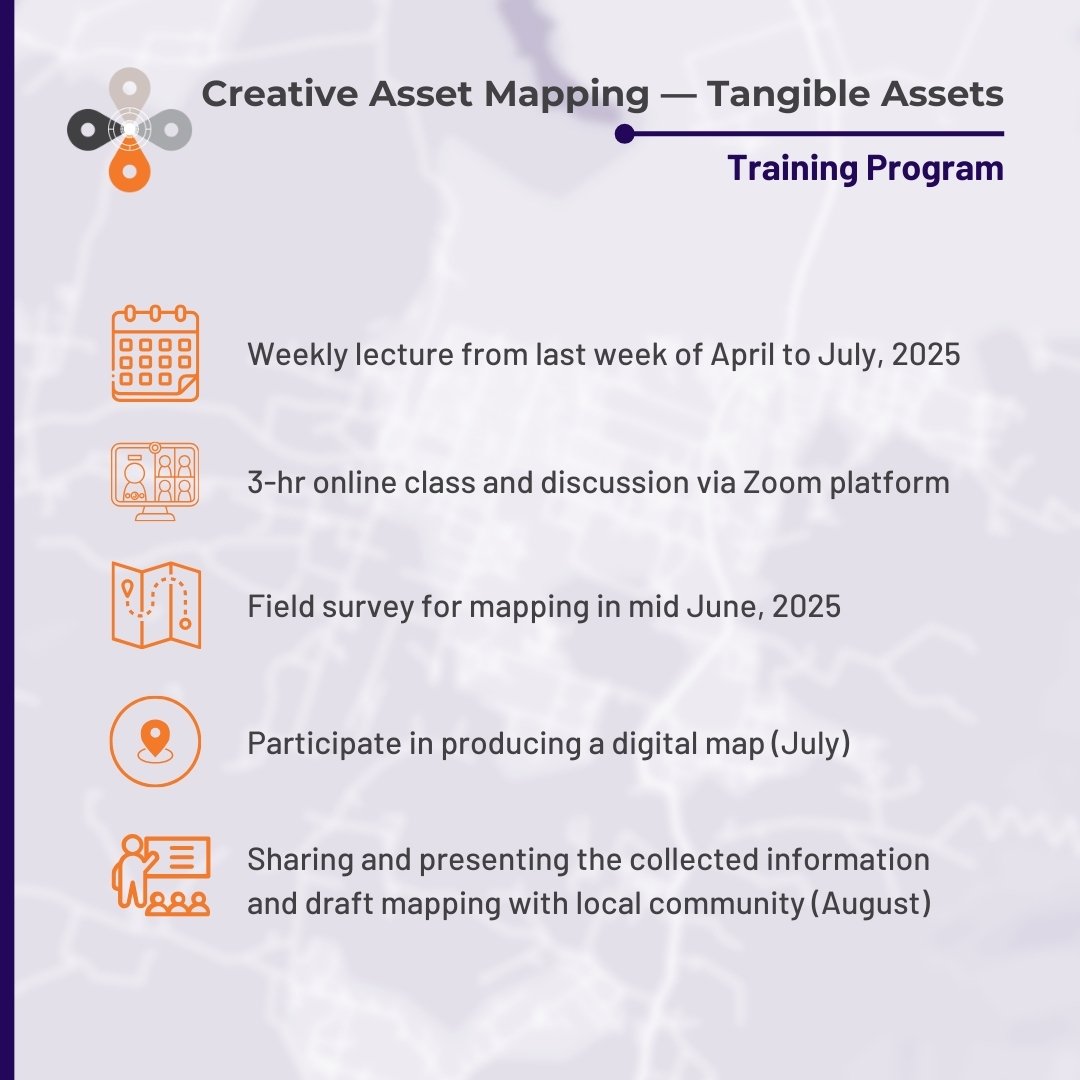Creative Asset Mapping—Tangible Assets
What is Creative Asset Mapping
A Creative Asset Mapping (CAM) is a process of identifying, documenting, and visually representing all the creative resources and talent within a community, including artists, cultural spaces, events, traditions, and other creative assets, often done through a collaborative effort to understand the cultural landscape and inform future development plans or initiatives.
Key points about creative asset mapping:
Community-driven: It usually involves active participation from local residents, artists, and community leaders to identify and share their perspectives on important creative assets.
Data visualization: The collected information is typically presented on a map, allowing for a visual understanding of where creative assets are located geographically.
Through this process, it will strengthen the bonds within the creative community. It will also be possible to preserve and improve the existing cultural practices. In addition, it will support the creation of new works in collaboration with other relevant organizations through cultural exchanges.
Background
Driven by AMCA's commitment to sharing knowledge about the CAM process and mapping practices with art and cultural professionals, a hands-on training program was implemented. From October to December 2023, AMCA conducted a pilot CAM project, encompassing both training and practical mapping exercises for arts and culture practitioners from Shan State, Mandalay and Yangon. The course, grounded in cultural asset mapping principles, was specifically tailored for individuals working within Myanmar's arts and culture sector including traditional handicrafts as a part of cultural activities. The program represented a crucial initial step in promoting local arts and culture, as well as fostering a comprehensive study and understanding of art-related cultural resources.
A total of 13 participants were equipped with the knowledge and tools necessary to effectively map artists, cultural practitioners, and handcraft artisans, along with the places and locations associated with traditional art and handcraft. The participants documented the creative assets in the regions and highlighted the challenges and threats faced by local creative and cultural practitioners. At the end of the program, the participants created the online maps that can be edited or updated based on the Google My Maps platform and the illustration maps for each region that can share the story with communities or the public.
Creative Asset Mapping—Tangible Assets
Recognizing the importance of mapping our country's valuable assets of the creative and cultural industry, AMCA is committed to continuing the Creative Asset Mapping program in 2025. This year’s program is supported by the British Council's Connections Through Culture grant programme. It aims to safeguard Myanmar's artistic and cultural heritage, focusing on communities impacted by displacement and conflict. By mapping cultural assets, it fosters understanding between diverse ethnic groups, promotes cultural exchange, and supports local artists and craftsmen.
Objectives
The key objectives include: preserving creative forms in endangered zones, whether due to the impacts of environmental change or the destructive consequences in conflict areas; creating local maps showcasing tangible cultural assets, providing a valuable resource for future process; sharing findings with cultural experts of local and international, fostering a collaborative exchange of knowledge and insights; and inspiring further research to promote a deeper understanding of creative assets in the country. This Myanmar-UK collaboration underscores the critical role of cultural identity and social cohesion in overcoming the current crisis.
Open Call
Are you passionate about forging connections between the rich tapestry of art and culture and the tangible creative assets within your community or region? Do you seek to acquire the knowledge and skills necessary to preserve these invaluable assets, to evaluate their significance, and to accurately map them on a map? If so, AMCA is extending an invitation through an open call for participants to join its Creative Asset Mapping training program.
-
Are you an artist, cultural practitioner, creative producer, or social worker from Shan State, Mon State, or Mandalay Region who is involved in archiving or documenting creative and cultural assets within your region or community?
Do you have 3 to 5 years of experience in social and cultural development within your region, working collaboratively with your community?
Are you interested in learning about creative asset mapping and participating personally in the development of this program?
If your answer is 'Yes' to all three questions, you are eligible to apply to participate in the Creative Asset Mapping - Tangible Assets program.
-
A total of 6 art and cultural practitioners from Shan State, Mon State, and Mandalay Division (two from each region) will be selected.
The Project Team from AMCA, along with three Regional Trainee Coordinators from the respective region, will work together with the six selected participants on this Creative Asset Mapping--Tangible Assets Program.
Professor Sandra Dudley (Professor of Museum Anthropology) from the University of Leicester, School of Museum Studies, will deliver lectures to all participating members. Interpretation will be provided as needed.
Thibi Co. will provide technical training to assist with mapping-related matters.
A small grant will be provided to cover the costs of attending online workshops and conducting field surveys.
-
Describe your role or involvement in art and cultural activities within your community/region.
Please describe an endangered tangible art and cultural creative asset. Briefly explain what is threatening that tangible asset and why it needs urgent documentation.
Briefly explain why do you want to participate in this project or learn the knowledge and skills of creative asset mapping
After participating in this project, how will the knowledge and skills be useful for you, and how do you wish to apply them in your practice or within the community?
-
Applications can be submitted conveniently through the Google Form accessible via the provided link. The application deadline is at 11:59 PM (Myanmar Time) on March 30th, 2025.
Apply here - https://forms.gle/8Rty4MrxKB1fYRJA8
If you have any trouble accessing the form, kindly check your network/vpn setting.
Should you require any assistance or need clarification regarding the program, contact us at contact@amcamyanmar.com or call during office hours at the following numbers: (+959) 764252971, (+959) 967604054, (+959) 256755502.


